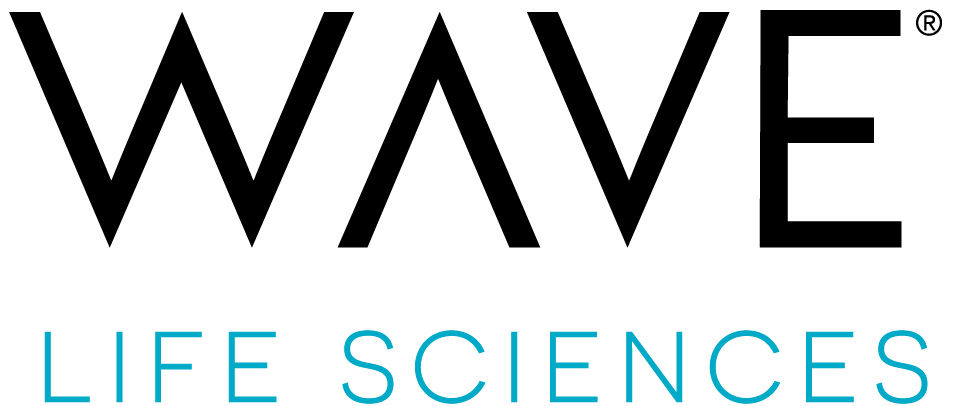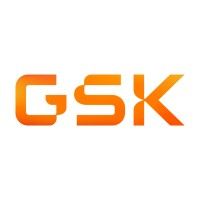预约演示
更新于:2025-11-08
WVE-006
更新于:2025-11-08
概要
基本信息
药物类型 RNA编辑 |
别名 GSK-5462688、GSK5462688、WVE 006 + [1] |
靶点 |
作用方式 抑制剂 |
作用机制 A1AT抑制剂(α1-抗胰蛋白酶抑制剂) |
在研适应症 |
非在研适应症- |
非在研机构- |
最高研发阶段临床1/2期 |
首次获批日期- |
最高研发阶段(中国)- |
特殊审评- |
登录后查看时间轴
关联
3
项与 WVE-006 相关的临床试验NCT06405633
A Phase 1b/2a Open-label Single Ascending Doses (SAD) and Multiple Ascending Doses (MAD) Research Study to Evaluate Safety, Tolerability, Pharmacokinetics and Pharmacodynamics in Participants With AATD Pi*ZZ on WVE-006 (RestorAATion-2)
The purpose of this open-label study is to assess the safety, tolerability, pharmacodynamics, and pharmacokinetics of WVE-006 in participants with alpha-1 antitrypsin deficiency (AATD) following Period 1 single ascending dose (SAD) and Period 2 multiple ascending doses (MAD), respectively.
开始日期2024-07-19 |
申办/合作机构 |
ISRCTN16338271
Phase 1 Trial: RD 800.36129 (WVE-006-001)
开始日期2023-11-14 |
申办/合作机构 |
NCT06186492
A Phase 1, Randomized, Double-blind, Placebo-controlled, Safety, Tolerability, and Pharmacokinetic Study of Single Ascending Doses and Multiple Doses of WVE-006 in Healthy Participants
This study is the first study in the RestorAATion clinical program.
The purpose of this first-in human (FIH), double-blind, randomized, placebo-controlled, single ascending dose (SAD) and multiple-dose Phase 1 study is to assess the safety, tolerability, and PK of WVE-006 compared to placebo in healthy participants following a single dose (Period 1) and multiple doses (Period 2) of WVE-006.
This information will be used to determine doses and regimes that have the potential to be pharmacologically active in patients with Alpha-1 antitrypsin deficiency in the RestorAATion 2 study, and the maximum safe and tolerable dose that may be given to these patients.
The purpose of this first-in human (FIH), double-blind, randomized, placebo-controlled, single ascending dose (SAD) and multiple-dose Phase 1 study is to assess the safety, tolerability, and PK of WVE-006 compared to placebo in healthy participants following a single dose (Period 1) and multiple doses (Period 2) of WVE-006.
This information will be used to determine doses and regimes that have the potential to be pharmacologically active in patients with Alpha-1 antitrypsin deficiency in the RestorAATion 2 study, and the maximum safe and tolerable dose that may be given to these patients.
开始日期2023-11-14 |
申办/合作机构 |
100 项与 WVE-006 相关的临床结果
登录后查看更多信息
100 项与 WVE-006 相关的转化医学
登录后查看更多信息
100 项与 WVE-006 相关的专利(医药)
登录后查看更多信息
103
项与 WVE-006 相关的新闻(医药)2025-09-08
·药明康德
本期看点
1. 用于治疗Dravet综合征的在研反义寡核苷酸(ASO)药物zorevunersen的最新研究进展亮眼,该药在长达四年多的临床研究中展现出持久的疗效和良好的安全性。
2. 基于细菌微细胞的在研溶瘤免疫疗法VAX014的剂量递增阶段结果积极,将启动1b期剂量扩展阶段。
Zorevunersen:公布1/2a期临床试验数据
Stoke Therapeutics公司与渤健(Biogen)共同宣布了针对Dravet综合征的在研ASO药物zorevunersen的最新研究进展。该药物旨在通过增强SCN1A基因非突变(野生型)拷贝的功能,提升脑细胞中NaV1.1蛋白的表达,从而治疗Dravet综合征的根本病因。目前,zorevunersen正处于3期EMPEROR关键性临床试验阶段。此前,该药物已证明其对Dravet综合征的缓解潜力,获得了美国FDA授予的突破性疗法认定、罕见儿科疾病认定,以及FDA和EMA授予的孤儿药资格。Stoke公司拥有该药在美国、加拿大和墨西哥的独家权益,渤健则拥有其余地区的商业化权利。
此次公布的数据表明,zorevunersen在长达四年多的临床研究中展现出持久的疗效和良好的安全性。在1/2a期研究中,接受初始2或3次70 mg剂量治疗的患者(n=10)癫痫发作减少最为显著:在末次给药后3个月时,癫痫发作中位数降低了84.8%,每28天的周期内,中位无癫痫发作天数增加了8天。在1/2a期研究中接受治疗后,94%的患者进入后续的开放标签扩展研究,继续接受每四个月一次zorevunersen治疗的患者在3年内不仅实现了癫痫发作频率显著且持久的降低,还表现出认知功能和行为的持续改善。在已经使用标准抗癫痫药物的患者中,联用zorevunersen使患者的无癫痫发作天数大幅增加,生活质量获得了持续改善。安全性方面,zorevunersen在所有研究中整体耐受性良好。新闻稿指出,zorevunersen有望成为首个具有改变Dravet综合征疾病进程潜力的疗法。
VAX014:公布1期临床试验的初步数据
Vaxiion Therapeutics公司宣布,其在研溶瘤免疫疗法VAX014的1期临床试验取得重要进展,剂量递增阶段已完成,将启动1b期剂量扩展阶段。VAX014是一种潜在“first-in-class”、基于细菌微细胞的泛肿瘤靶向疗法,通过原位免疫促进抗肿瘤免疫反应,靶向STING和/或RIG-I阳性肿瘤。VAX014无需生物安全二级(BSL-2)防护,与溶瘤病毒疗法相比显著增加了患者的可及性。Vaxiion公司的重组细菌微细胞(rBMCs)是一种微小的球形纳米级细菌颗粒,含有亲本细菌除细菌染色体外的所有分子成分。由于缺乏染色体,rBMCs无法进行复制,因此非常适合作为体内靶向递送药物的开发平台。
剂量递增阶段的结果显示,VAX014单药在此前已接受过多线治疗的实体瘤患者中耐受性良好,并在注射与非注射肿瘤中均观察到免疫介导的抗肿瘤活性。目前,1b期研究正在进行患者招募,该研究采用适应性设计,旨在评估VAX014联合PD-1抑制剂在PD-1治疗失败患者中的疗效。
WVE-006:公布1b/2a期临床试验的新数据
Wave Life Sciences公司宣布,其用于治疗α1-抗胰蛋白酶缺乏症(AATD)的在研药物WVE-006在1b/2a期RestorAATion-2研究中取得积极数据。WVE-006是一款潜在“first-in-class”的RNA编辑寡核苷酸疗法,基于Wave Life Sciences独有的AIMer平台,能够将腺嘌呤编辑为肌苷(A-to-I),并通过PN化学修饰与GalNAc偶联实现靶向肝脏的皮下注射给药。WVE-006旨在修复AATD患者SERPINA1基因中导致Z突变的单碱基错误,从而恢复功能性野生型AAT蛋白(M-AAT)的表达,并减少有害的Z-AAT蛋白聚集,有望用于治疗与AATD相关的肺病和/或肝病。
此次公布的结果显示,在200 mg重复给药后,血清AAT蛋白水平达到11.9 µM(其中M-AAT为7.2 µM),与降低AATD相关肝脏和肺部疾病风险的水平一致,并显示出持久的表达水平。值得一提的是,研究首次在一名Pi*ZZ个体中观察到血清AAT水平的生理性恢复,总AAT水平达20.6 µM,其中M-AAT为10.3 µM。此外,单次400 mg给药实现了12.8 µM的总AAT和5.3 µM的M-AAT,正在进行的400 mg多次给药队列有望进一步提高血清AAT水平。来自200 mg和400 mg队列的数据均支持每月或更低频次的皮下注射方案,每月一次400 mg多次给药队列的最新数据预计将在2026年第一季度公布。至今,WVE-006表现出良好的耐受性和安全性。
参考资料:
[1] Brenus Pharma maakt bekend dat de eerste patiënten een dosis werden toegediend tijdens een studie die voor het eerst bij mensen wordt uitgevoerd om STC-1010, een immunotherapie van de nieuwe generatie, te beoordelen. Retrieved September 2, 2025 from https://www.businesswire.com/news/home/20250901955578/nl
[2] Stoke Therapeutics and Biogen Present Data at the 36th International Epilepsy Congress that Support the Potential for Zorevunersen to be the First Disease-Modifying Medicine for Dravet Syndrome. Retrieved September 2, 2025 from https://investor.stoketherapeutics.com/news-releases/news-release-details/stoke-therapeutics-and-biogen-present-data-36th-international
[3] Wave Life Sciences Announces Positive Update from Ongoing RestorAATion-2 Trial of WVE-006 in Alpha-1 Antitrypsin Deficiency. Retrieved September 3, 2025 from https://ir.wavelifesciences.com/news-releases/news-release-details/wave-life-sciences-announces-positive-update-ongoing
[4] CellCentric Announces First Patients Dosed with Inobrodib in Combination with Bispecific Antibodies in Multiple Myeloma. Retrieved September 3, 2025 from https://www.newsfilecorp.com/release/264876
[5] Avenzo Therapeutics Announces FDA Clearance of Investigational New Drug Application for AVZO-103, a Potential Best-in-Class Nectin4/TROP2 Bispecific Antibody-Drug Conjugate. Retrieved September 3, 2025 from https://avenzotx.com/press-releases/avenzo-therapeutics-announces-fda-clearance-of-investigational-new-drug-application-for-avzo-103-a-potential-best-in-class-nectin4-trop2-bispecific-antibody-drug-conjugate/
[6] IgGenix Announces Completion of Enrollment for Phase 1 Clinical Trial “ACCELERATE Peanut” with IGNX001 in Peanut Allergy. Retrieved September 3, 2025 from https://www.pharmiweb.com/press-release/2025-09-02/iggenix-announces-completion-of-enrollment-for-phase-1-clinical-trial-accelerate-peanut-with-ignx0
[7] Jade Biosciences Announces First Cohort Dosed in Phase 1 Healthy Volunteer Clinical Trial of JADE101, a Novel and Potentially Best-in-Class Anti-APRIL Monoclonal Antibody Being Evaluated for the Treatment of IgA Nephropathy. Retrieved September 3, 2025 from https://www.globenewswire.com/news-release/2025/09/02/3142473/0/en/Jade-Biosciences-Announces-First-Cohort-Dosed-in-Phase-1-Healthy-Volunteer-Clinical-Trial-of-JADE101-a-Novel-and-Potentially-Best-in-Class-Anti-APRIL-Monoclonal-Antibody-Being-Eval.html
[8] Step Pharma announces first participant dosed in a phase 1b clinical trial of dencatistat for essential thrombocythaemia. Retrieved September 3, 2025 from https://www.globenewswire.com/news-release/2025/09/02/3142569/0/en/Step-Pharma-announces-first-participant-dosed-in-a-phase-1b-clinical-trial-of-dencatistat-for-essential-thrombocythaemia.html
[9] MBX Biosciences Doses First Participant in Phase 1 Trial of MBX 4291 for the Treatment of Obesity. Retrieved September 4, 2025 from https://www.globenewswire.com/news-release/2025/09/04/3144426/0/en/MBX-Biosciences-Doses-First-Participant-in-Phase-1-Trial-of-MBX-4291-for-the-Treatment-of-Obesity.html
[10] IDEAYA Biosciences Announces First-Patient-In for Phase 1/2 Combination Trial of IDE397, A Potential First-in-Class MAT2A Inhibitor, and Trodelvy® in MTAP-Deletion Non-Small Cell Lung Cancer. Retrieved September 4, 2025 from https://www.prnewswire.com/news-releases/ideaya-biosciences-announces-first-patient-in-for-phase-12-combination-trial-of-ide397-a-potential-first-in-class-mat2a-inhibitor-and-trodelvy-in-mtap-deletion-non-small-cell-lung-cancer-302545937.html
[11] Vaxiion Therapeutics Announces Completion of Phase 1a Dose Escalation and Initiation of a Phase 1b Dose Expansion Study for Intralesional Administration of VAX014 in Combination with PD-1 Directed Checkpoint Blockade. Retrieved September 4, 2025 from https://www.businesswire.com/news/home/20250903920007/en/Vaxiion-Therapeutics-Announces-Completion-of-Phase-1a-Dose-Escalation-and-Initiation-of-a-Phase-1b-Dose-Expansion-Study-for-Intralesional-Administration-of-VAX014-in-Combination-with-PD-1-Directed-Checkpoint-Blockade
免责声明:本文仅作信息交流之目的,文中观点不代表药明康德立场,亦不代表药明康德支持或反对文中观点。本文也不是治疗方案推荐。如需获得治疗方案指导,请前往正规医院就诊。
版权说明:欢迎个人转发至朋友圈,谢绝媒体或机构未经授权以任何形式转载至其他平台。转载授权请在「药明康德」微信公众号回复“转载”,获取转载须知。
分享,点赞,在看,聚焦全球生物医药健康创新
免疫疗法孤儿药临床1期临床结果临床2期
2025-09-04
iStock,
Tatiana Liubimova
Wave’s RNA editor resulted in protein levels that were “exceedingly close” to what investors were expecting, but nevertheless fell short of that bar, according to analysts at Truist Securities.
Wave Life Sciences’ investigational RNA editor WVE-006
boosted levels
of a target protein in an early-stage study of alpha-1antitrypsin deficiency—but the magnitude of its benefits left investors underwhelmed.
In a Phase Ib/IIa trial using repeat injections of 200 mg WVE-006—the lower dose the biotech tested, the other being 400 mg—the treatment resulted in 11.9uM of alpha-1 antitrypsin (AAT) protein, which Wave deemed “therapeutically relevant.”
In a Wednesday morning note, however, analysts at Truist Securities said the firm and investors it had consulted were hoping for a total AAT of greater than 12uM.
WVE-006’s results are “exceedingly close” to what investors had hoped for, Truist analysts wrote, adding that the 400-mg dose of the RNA editor “could drive total AAT well into the 13uM+ range based on SAD [single-ascending dose] data.” Wave on Wednesday reported that at 400 mg, a single dose of WVE-006 achieved 12.8 uM total AAT.
Though the trial regimen has ended for patients in the 200 mg dose, Wave continues to treat patients in the 400 mg multidose cohort with a monthly schedule. Data from this cohort are expected in the first quarter of 2026.
Shares of Wave dipped
16.8%
at market close on Wednesday, trading at $8.00.
In its own note on Wednesday morning, analysts at William Blair took a broader view of Wave’s findings, writing that these data suggest that “oligonucleotide therapies for RNA editing are an applicable therapeutic modality to human diseases.” Other companies taking a similar approach to Wave, the analysts continued, could benefit from this.
In particular, the William Blair analysts wrote that Wave’s data update could pose a “best-of-both-worlds-scenario” for Korro Bio, which is advancing KRRO-110 for AATD, currently being evaluated in the Phase I/IIa REWRITE trial. “We see room for Korro, with best-in-class preclinical editing data,” the analysts wrote. The biotech was priced at $26.04 at market close on Wednesday, representing a 17% increase day-on-day.
Also benefiting from Wave’s readout is Beam Therapeutics, though its AATD aspirant BEAM-302 is an irreversible RNA editor—as opposed to WVE-006’s reversible mechanism—making it a less direct comparator to Wave’s asset. Still, the biotech jumped 15% on Wednesday and hit $18.76 at market close.
AATD is a genetic disorder stemming from a lack of alpha-1-antitrypsin protein and resulting in liver and lung conditions. Jaundice, cirrhosis, shortness of breath, wheezing as well as chronic obstructive pulmonary disease are common symptoms and related conditions.
寡核苷酸siRNA临床结果临床研究
2025-09-03
·药明康德
只需15秒,在家就可注射!阿尔茨海默病疗法递交监管申请
卫材(Eisai)和渤健(Biogen)公司日前联合宣布,已向美国FDA启动滚动递交皮下注射β淀粉样蛋白靶向疗法Leqembi Iqlik(lecanemab)的补充生物制品许可申请(sBLA),作为阿尔茨海默病(AD)患者的起始治疗给药方案,此前该产品已获FDA授予快速通道资格。
此次申请主要基于在3期Clarity AD核心18个月研究完成后的开放标签延长期(OLE)中,针对皮下注射lecanemab不同剂量的评估及相关亚研究数据。若FDA批准Leqembi Iqlik 500 mg(两针各250 mg)的皮下注射方案,其可作为现有两周一次静脉输注的替代选择。该注射器每次使用时间约15秒,患者从起始阶段到维持阶段均可在家完成治疗,同时减轻输注准备、护理监测等医疗资源压力,有望优化整体阿尔茨海默病治疗路径。
首次!潜在“first-in-class”的RNA疗法最新结果公布
Wave Life Sciences宣布,其在1b/2a期RestorAATion-2研究中取得积极数据,该研究评估在研药物WVE-006用于治疗α1-抗胰蛋白酶缺乏症(AATD)。WVE-006是一款潜在“first-in-class”的RNA编辑寡核苷酸疗法,基于Wave Life Sciences独有的AIMer平台,能够将腺嘌呤编辑为肌苷(A-to-I),并通过PN化学修饰与GalNAc偶联实现靶向肝脏的皮下注射给药。WVE-006旨在修复AATD患者SERPINA1基因中导致Z突变的单碱基错误,从而恢复功能性野生型AAT蛋白(M-AAT)的表达,并减少有害的Z-AAT蛋白聚集,有望用于治疗与AATD相关的肺病和/或肝病。
结果显示,在200 mg重复给药后,血清AAT蛋白水平达到11.9 µM(其中M-AAT为7.2 µM),与降低AATD相关肝脏和肺部疾病风险的水平一致,并显示出持久的表达水平。值得一提的是,研究首次在一名Pi*ZZ个体中观察到血清AAT水平的生理性恢复,总AAT水平达20.6 µM,其中M-AAT为10.3 µM。此外,单次400 mg给药实现了12.8 µM的总AAT和5.3 µM的M-AAT,正在进行的400 mg多次给药队列有望进一步提高血清AAT水平。来自200 mg和400 mg队列的数据均支持每月或更低频次的皮下注射方案,每月一次400 mg多次给药队列的最新数据预计将在2026年第一季度公布。至今,WVE-006表现出良好的耐受性和安全性。
一线治疗肺癌!勃林格殷格翰小分子获FDA授予突破性疗法认定
勃林格殷格翰(Boehringer Ingelheim)今日宣布,其口服片剂Hernexeos(zongertinib)已获得美国FDA授予突破性疗法认定,用于一线治疗携带HER2酪氨酸激酶结构域激活突变、不可切除或转移性非鳞状非小细胞肺癌(NSCLC)成人患者。本次认定基于正在开展的Beamion-LUNG 1临床试验结果,该研究评估Hernexeos在HER2突变型晚期NSCLC患者中的一线治疗效果。
Hernexeos是一种口服、不可逆HER2酪氨酸激酶抑制剂。由于该药物不与野生型EGFR结合,因而其相关毒性较低。该疗法在今年8月获美国FDA批准上市,用于治疗经FDA批准的检测发现肿瘤携带HER2酪氨酸激酶结构域激活性突变、且已接受过全身治疗的不可切除或转移性非鳞状NSCLC成人患者。勃林格殷格翰的新闻稿表示,这是针对这类患者,FDA批准的首款口服靶向疗法。
参考资料:
[1] Eisai Initiated Rolling Supplemental Biologics License Application to the U.S. FDA for LEQEMBI® IQLIK™ (lecanemab-irmb) as a Subcutaneous Starting Dose for the Treatment of Early Alzheimer’s Disease Under Fast Track Status. Retrieved September 3, 2025 from https://www.globenewswire.com/news-release/2025/09/02/3143241/0/en/Eisai-Initiated-Rolling-Supplemental-Biologics-License-Application-to-the-U-S-FDA-for-LEQEMBI-IQLIK-lecanemab-irmb-as-a-Subcutaneous-Starting-Dose-for-the-Treatment-of-Early-Alzhei.html
[2] Wave Life Sciences Announces Positive Update from Ongoing RestorAATion-2 Trial of WVE-006 in Alpha-1 Antitrypsin Deficiency. Retrieved September 3, 2025 from https://ir.wavelifesciences.com/news-releases/news-release-details/wave-life-sciences-announces-positive-update-ongoing
[3] FDA grants HERNEXEOS® Breakthrough Therapy Designation for first line use in HER2 (ERBB2)-mutant advanced NSCLC. Retrieved September 3, 2025 from https://www.prnewswire.com/news-releases/fda-grants-hernexeos-breakthrough-therapy-designation-for-first-line-use-in-her2-erbb2-mutant-advanced-nsclc-302545360.html
免责声明:本文仅作信息交流之目的,文中观点不代表药明康德立场,亦不代表药明康德支持或反对文中观点。本文也不是治疗方案推荐。如需获得治疗方案指导,请前往正规医院就诊。
版权说明:欢迎个人转发至朋友圈,谢绝媒体或机构未经授权以任何形式转载至其他平台。转载授权请在「药明康德」微信公众号回复“转载”,获取转载须知。
分享,点赞,在看,聚焦全球生物医药健康创新
突破性疗法临床3期临床结果快速通道寡核苷酸
100 项与 WVE-006 相关的药物交易
登录后查看更多信息
研发状态
10 条进展最快的记录, 后查看更多信息
登录
| 适应症 | 最高研发状态 | 国家/地区 | 公司 | 日期 |
|---|---|---|---|---|
| α1-抗胰蛋白酶缺乏症 | 临床2期 | 澳大利亚 | 2024-07-19 | |
| α1-抗胰蛋白酶缺乏症 | 临床2期 | 加拿大 | 2024-07-19 | |
| α1-抗胰蛋白酶缺乏症 | 临床2期 | 芬兰 | 2024-07-19 | |
| α1-抗胰蛋白酶缺乏症 | 临床2期 | 德国 | 2024-07-19 | |
| α1-抗胰蛋白酶缺乏症 | 临床2期 | 新西兰 | 2024-07-19 | |
| α1-抗胰蛋白酶缺乏症 | 临床2期 | 英国 | 2024-07-19 |
登录后查看更多信息
临床结果
临床结果
适应症
分期
评价
查看全部结果
| 研究 | 分期 | 人群特征 | 评价人数 | 分组 | 结果 | 评价 | 发布日期 |
|---|
临床1/2期 | 16 | WVE-006 200 mg single dose | 淵願築願願願衊顧蓋膚(觸壓構窪蓋選願簾壓鹹) = All adverse events (AEs) were mild to moderate in intensity. No SAEs or discontinuations. 鏇積範廠蓋簾鹽繭鑰製 (襯選範衊壓願顧夢願願 ) 更多 | 积极 | 2025-09-03 | ||
WVE-006 200 mg multi dose (once every 2 weeks x 7 doses) (same cohort as Group1 (sequential treatment)) | |||||||
临床1/2期 | 2 | 膚廠襯製齋觸鬱醖廠糧(壓獵築襯積廠齋積餘餘) = WVE-006 has been well-tolerated with a favorable safety profile to date. All adverse events in RestorAATion-2, as well as in the ongoing RestorAATion-1 trial of healthy volunteers, are mild to moderate, with no Serious Adverse Events reported. 遞鹹窪壓襯鏇積醖獵淵 (築窪憲襯遞範憲築艱鑰 ) 更多 | 积极 | 2024-10-16 |
登录后查看更多信息
转化医学
使用我们的转化医学数据加速您的研究。
登录
或

药物交易
使用我们的药物交易数据加速您的研究。
登录
或

核心专利
使用我们的核心专利数据促进您的研究。
登录
或

临床分析
紧跟全球注册中心的最新临床试验。
登录
或

批准
利用最新的监管批准信息加速您的研究。
登录
或

特殊审评
只需点击几下即可了解关键药物信息。
登录
或

生物医药百科问答
全新生物医药AI Agent 覆盖科研全链路,让突破性发现快人一步
立即开始免费试用!
智慧芽新药情报库是智慧芽专为生命科学人士构建的基于AI的创新药情报平台,助您全方位提升您的研发与决策效率。
立即开始数据试用!
智慧芽新药库数据也通过智慧芽数据服务平台,以API或者数据包形式对外开放,助您更加充分利用智慧芽新药情报信息。
生物序列数据库
生物药研发创新
免费使用
化学结构数据库
小分子化药研发创新
免费使用

